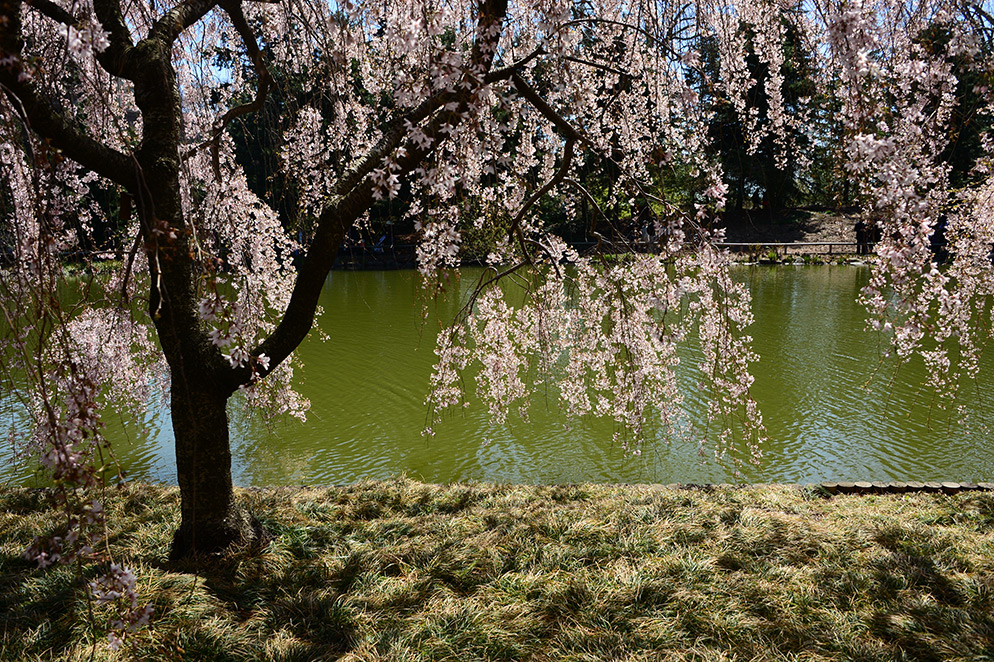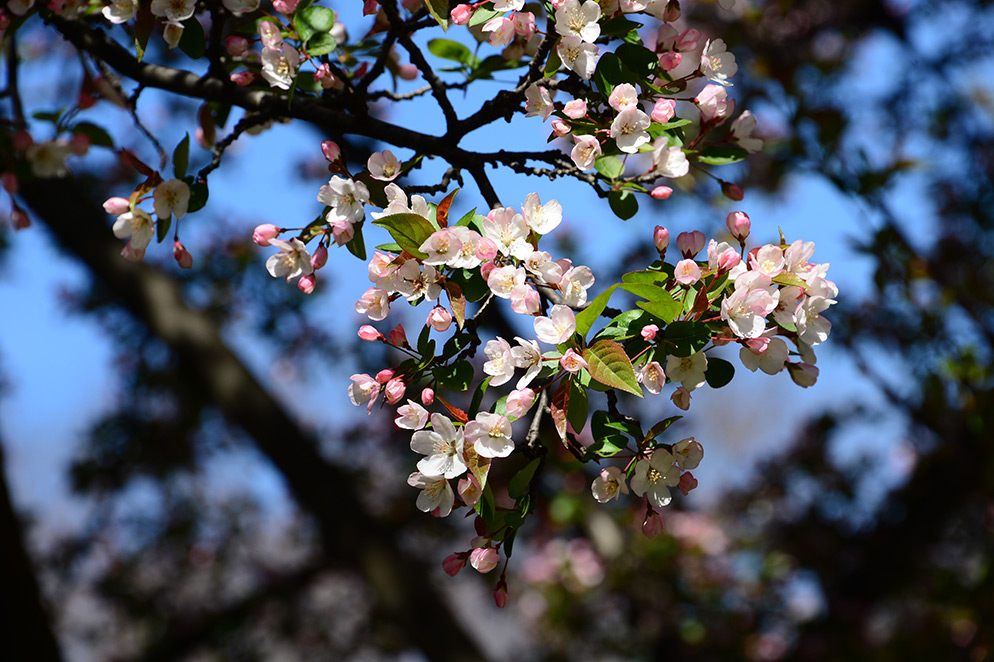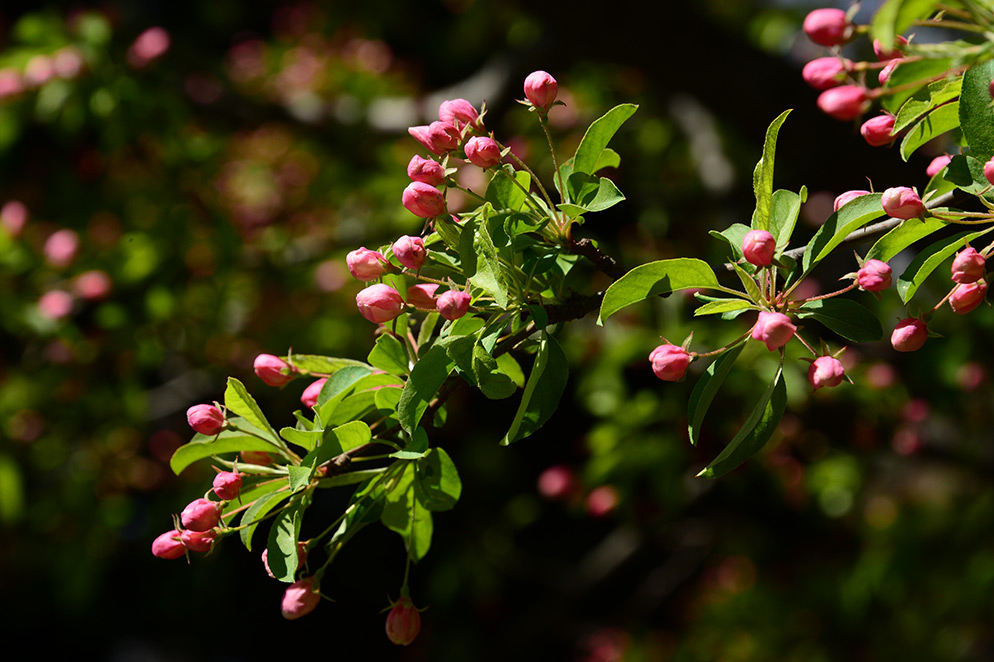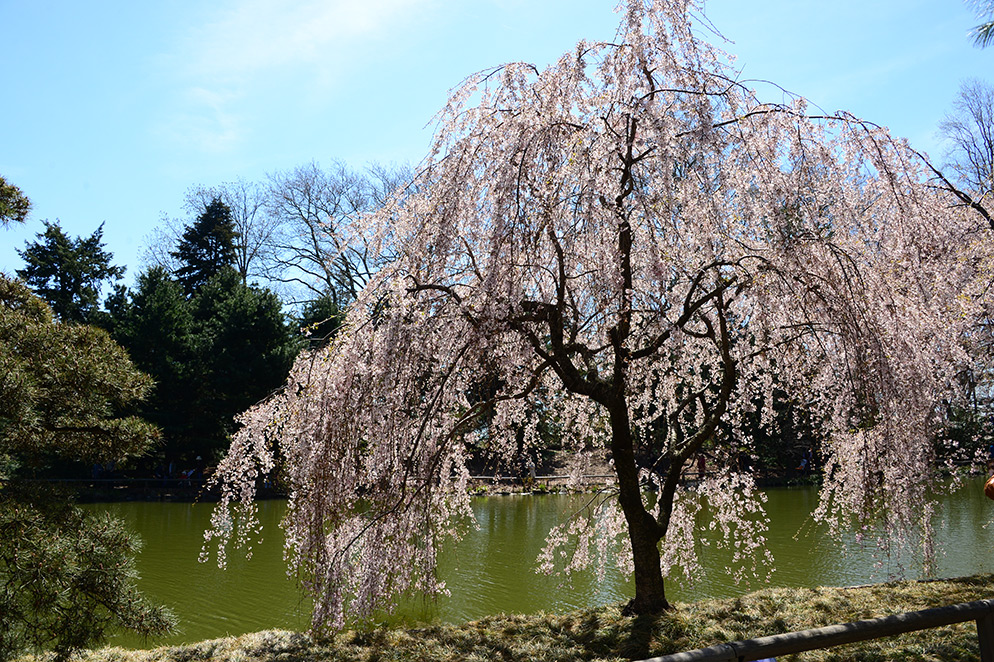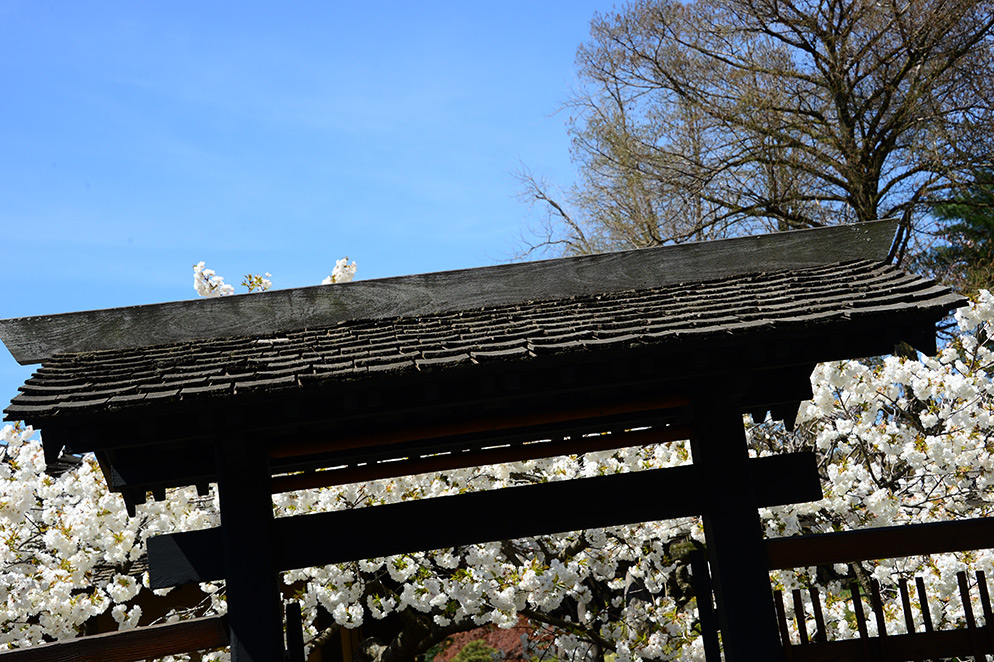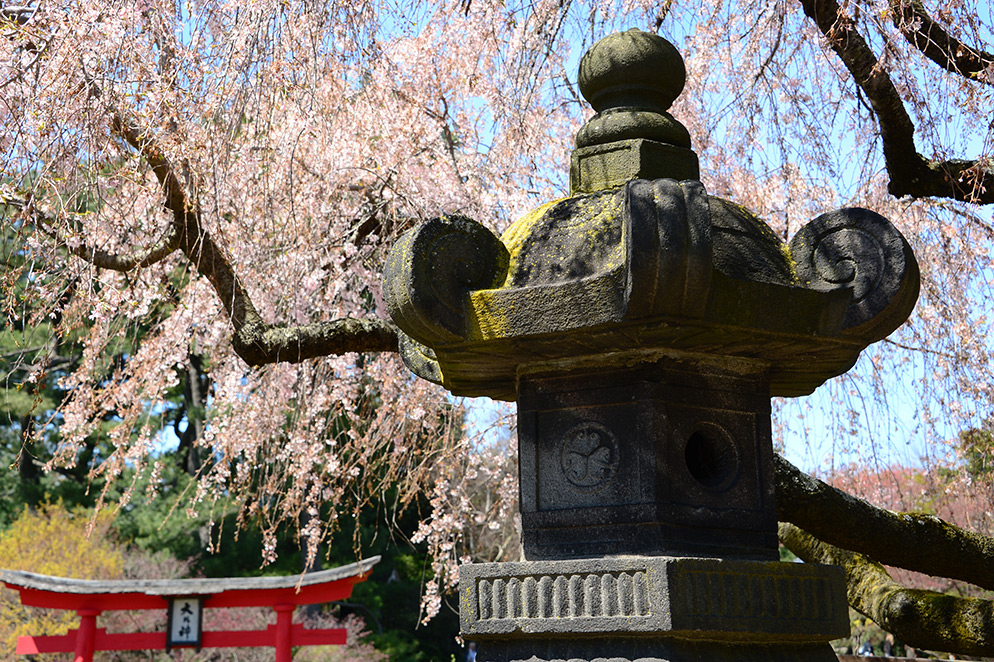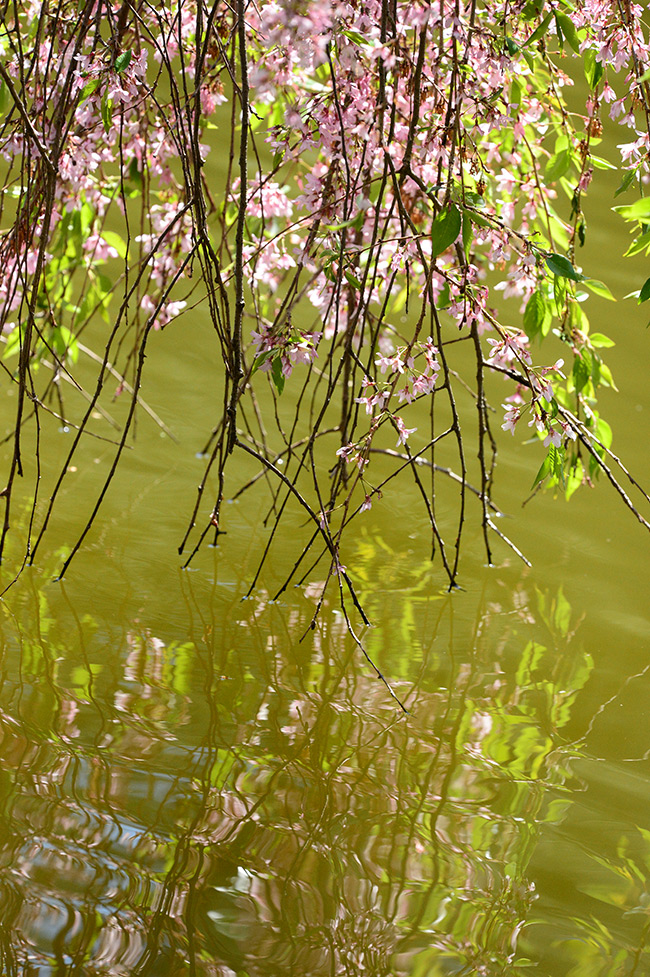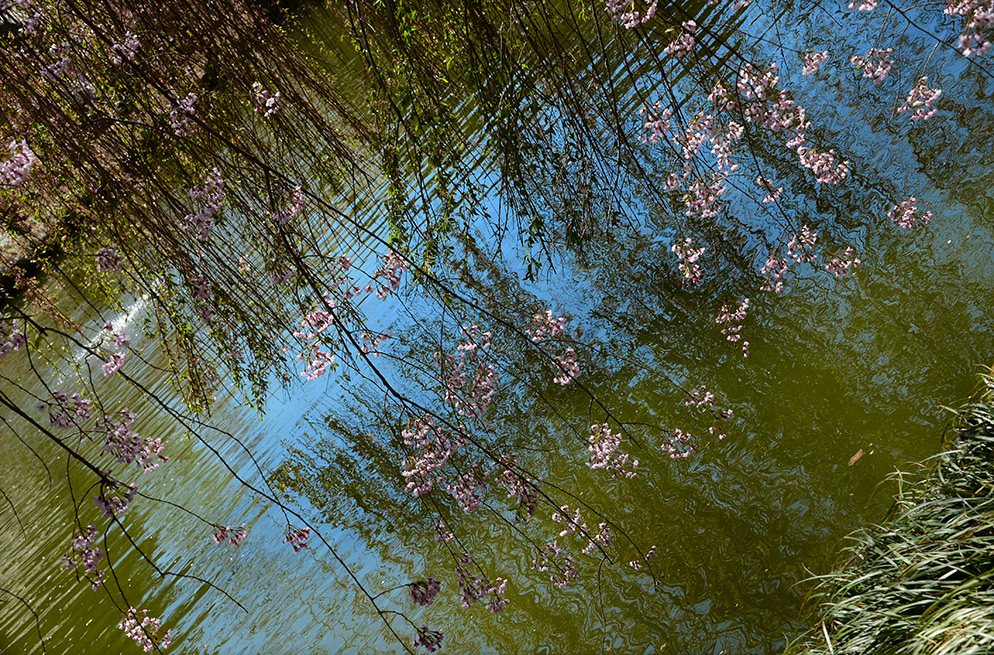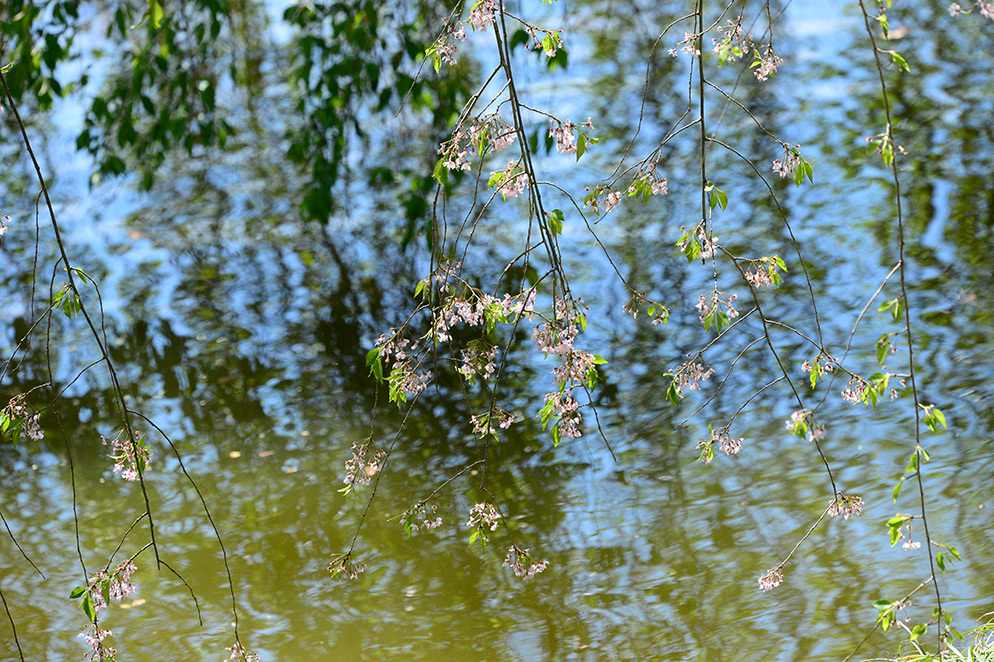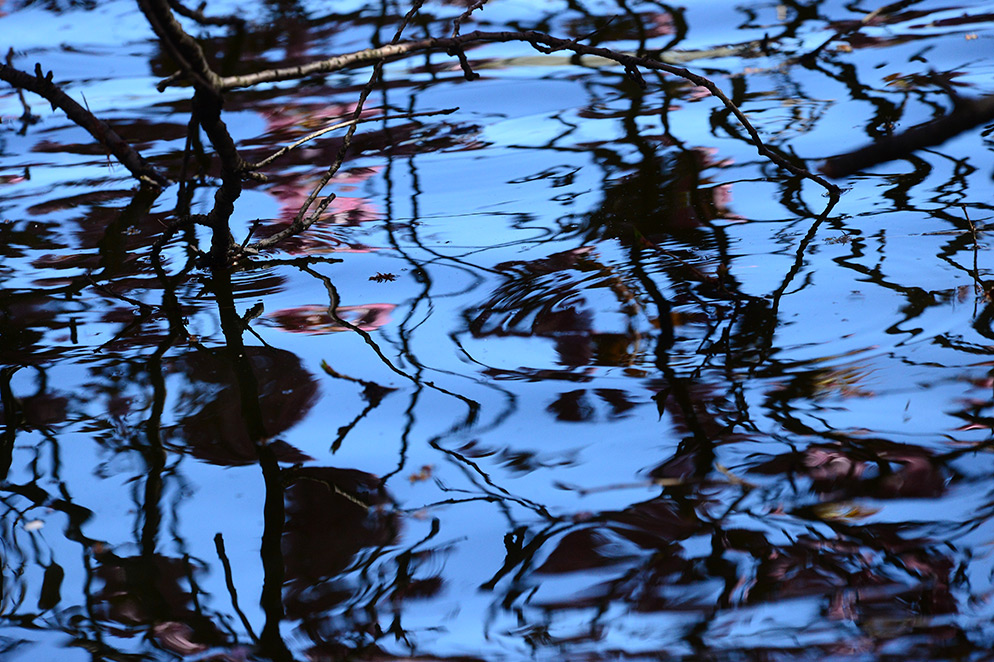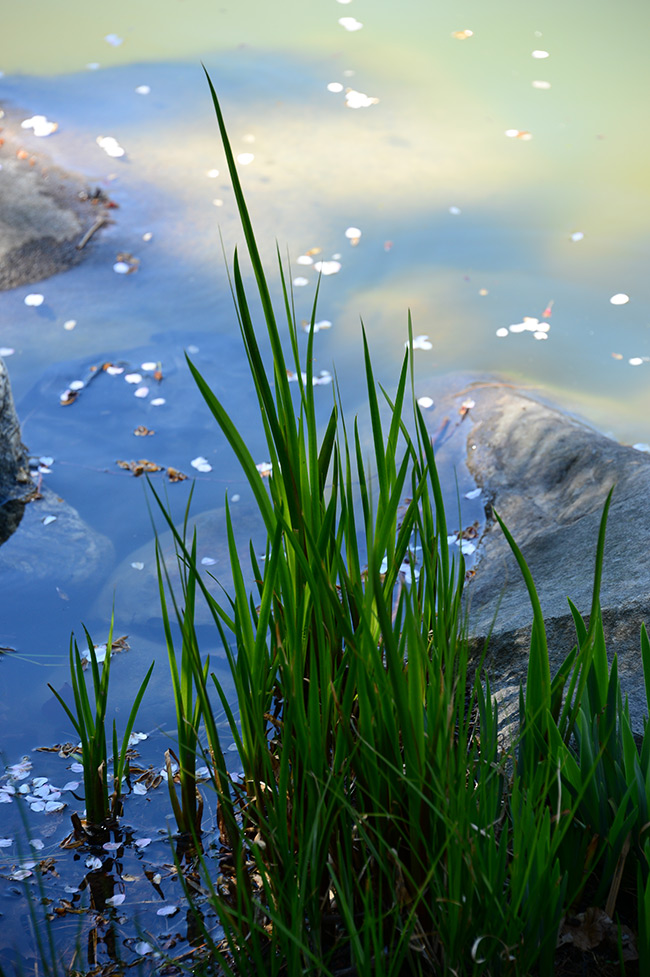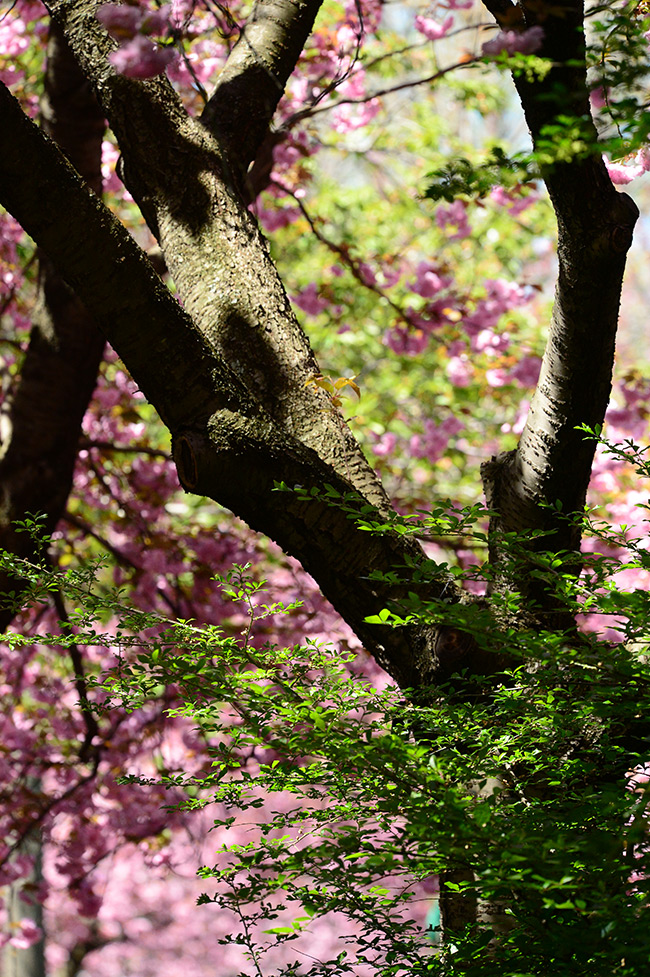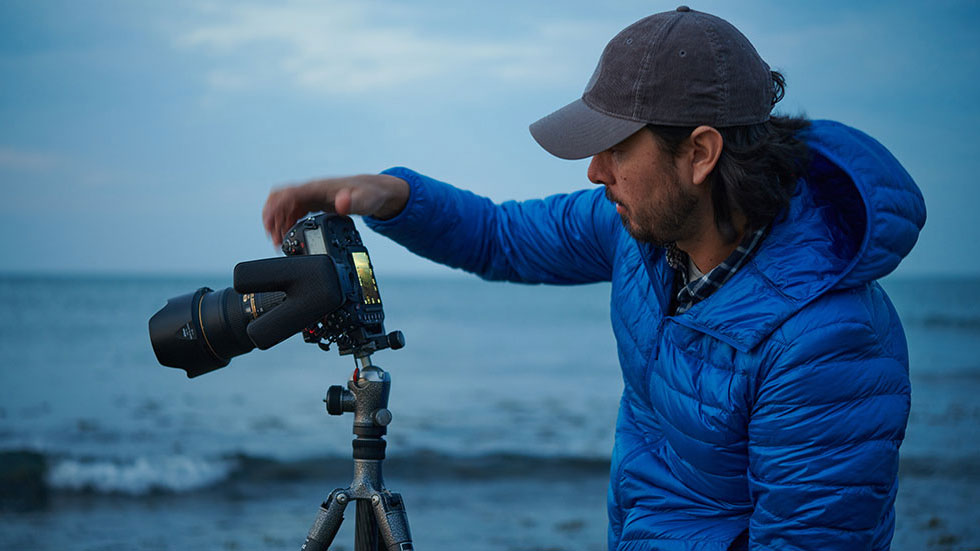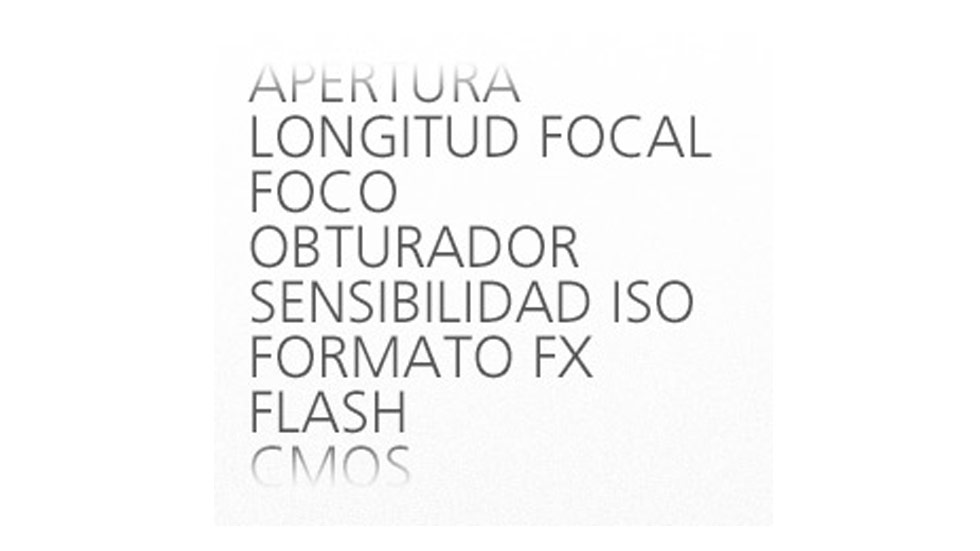Tips for Taking Great Photos of Cherry Blossoms
Use the compositional technique of a framing element. The tree is the main focus in the image, but also frames the scene.
Cherry Blossoms in bloom are one of the most beautiful and photographed signs that Spring has finally arrived. Most well known in Japan, there are numerous parks and arboretums in cities across the US that feature cherry trees. And many of these places also celebrate with a Cherry Blossom festival—bringing people out in droves to enjoy the view.
Cherry Blossoms—being so photogenic—offer a myriad of ways in which to photograph them. To make the most of your Cherry Blossom photography, we’ve gathered 15 tips for capturing these stunning displays of Spring’s arrival.
Choosing Your Lens
Bring a zoom lens or if you normally shoot only with prime (fixed focal length) lenses, a few different focal lengths so you can capture a variety of photographs. You’ll want to bring your widest lens, whether that’s a 14-30mm (NIKKOR Z 14-30mm f/4 S) for the Z series mirrorless cameras, the 8-15mm fisheye zoom (AF-S FISHEYE NIKKOR 8-15mm f/3.5-4.5E ED) or 14-24mm (AF-S NIKKOR 14-24mm f/2.8G ED) if you’re shooting full-frame DSLR or 16-80mm (AF-S DX NIKKOR 16-80mm f/2.8-4E ED VR) or 18-55mm kit lens (AF-P DX NIKKOR 18-55mm f/3.5-5.6G) for a DX format DSLR. Another thing to remember if you're using the Z series cameras is that with the Mount Adapter FTZ, you can use most Nikon lenses that are made for SLRs. (Check your camera's manual to make sure your specific lenses will work with your Z camera.)
You’ll also want to bring a telephoto such as a 24-120mm (AF-S NIKKOR 24-120mm f/4G ED VR), 28-300mm (AF-S NIKKOR 28-300mm f/3.5-5.6G ED VR), 70-200mm (AF-S NIKKOR 70-200mm f/4G ED VR), or even a prime lens in the 105mm (AF-S NIKKOR 105mm f/1.4E ED) to 300mm (AF-S NIKKOR 300mm f/4E PF ED VR) focal length range.
The third type of lens you’ll want to bring is a macro lens, if you own one.
Even if you only have one lens, don’t be discouraged. Remember that you may always be able to back up or walk closer to the subject if your lens doesn’t get you where you want to be.
The types of photographs you can make of the Cherry Blossoms are almost as numerous as the varieties of blossoms.
15 Cherry Blossom Photography Tips:
-
Shoot wide. Fill the entire frame with an entire tree or shoot an entire grove of trees.
-
Zoom in tight. Zoom in for a close-up showing a small grouping of blossoms.
-
Depending on the size of the tree, you may be able to get up close and even use a macro lens to capture the petals, showing minute details.
-
Some varieties of Cherry Blossom trees have branches that hang down to the ground, or when planted near ponds or other water features, the branches dangle over the water. Compose a photograph to juxtapose the blossoms and branches with the water beyond for a unique image. Play with the placement in the frame of the blossoms against the sky too.
-
Look for a darker or lighter background for the flowers or tree branches you’re photographing. By placing a lighter subject against a darker background or darker subject against a lighter background, the subject will stand out much more. You may have to walk around a tree or trees to find just the right spot for your composition to be successful, but it’s worth taking the time to do so.
-
First look up. From underneath a tree, or in the middle of a grove, shooting upwards into the sky will allow you to make an image that is more graphical—blocks of color filling the frame with little bits of blue sky visible in the background as opposed to individual blossoms. Look for trees that are next to one another that feature different color blossoms for a more colorful image.
-
Then look down. You may find blossoms that have fallen to the ground or full blossoms or petals floating on the water. You may even find most of the blossoms of one tree have fallen—and are blanketing the ground. Bare branches juxtaposed against the fallen flowers show the circle of life.
-
Go high key. Shoot light colored blossoms against the bright sky.
-
And low key. Shoot darker colored blossoms against a dark sky or water in the background. Use a polarizing filter on your lens to darken the sky or water in the frame.
-
If the tress you’re photographing are in a Japanese style garden, you’ll definitely want to make some pictures using the architecture of the garden to complement the Cherry Blossoms, for added interest.
-
Look for instances where the tree limbs or branches not necessarily the flowers become the focal point of your photograph. Look for leading lines, which are lines that compositionally flow through an image, directing the viewer’s eye.
-
Use your widest aperture to separate a bunch of blossoms against the soft bokeh blur of color.
-
Use your camera to its fullest. Take horizontal compositions, vertical compositions and if your camera offers it, square or 16:9 format images. The 8-15mm fisheye zoom can even take fully circular images when zoomed all the way out to 8mm on a full-frame camera body. See how you can use branches or architecture to frame your shot and how it varies when you change the image format.
-
Don’t put the actual Cherry Blossoms in the frame. Use the reflection of blossoms in the water or other reflective surface such as the windows of a nearby building as your main subject, for an abstract image.
-
See how lighting and shadow affect the mood of your image. Backlighting blossoms or trees will evoke a different mood than bright noon-day sunlight or early morning/late afternoon sun.
When do the blossoms bloom?
The internet is your friend when it comes to researching when you might expect to see the Cherry Blossoms in your area.
Cherry Blossoms bloom throughout the Spring, however depending upon where in the country you live, they may bloom earlier or later. For instance, the southern states may have blooms in February or March. More northern states might be in April or even May.
The entire season lasts about a month, although there are early and late blooming varieties. You can photograph Cherry Blossoms prior to blooming, in full bloom and even post bloom, with each image looking distinctively different.
Where to find Cherry Blossoms
Check the internet to see where you might find Cherry Blossom displays or festivals near you.
Here are some popular areas around the country with beautiful Cherry Blossom gardens:
-
Athens, OH
-
Boston – Charles River Esplanade
-
Brooklyn, NY – Brooklyn Botanic Garden
-
Chicago, IL – Chicago Botanic Garden
-
Dallas, TX – Dallas Arboretum
-
Irmo, SC
-
Macon, GA
-
Nashville, TN – Cherry Blossom Park
-
New Haven, CT
-
Newark, NJ – Branch Brook Park
-
Philadelphia, PA – Shofuso Japanese House and Garden
-
Portland, OR
-
Salem, OR – Capitol Mall
-
San Francisco, CA – Golden Gate Park Japanese Tea Garden
-
Seattle, WA – University of Washington
-
St. Louis, MO – Missouri Botanical Garden
-
Traverse, MI – Orchards
-
Washington DC. – Tidal basin and National Mall

